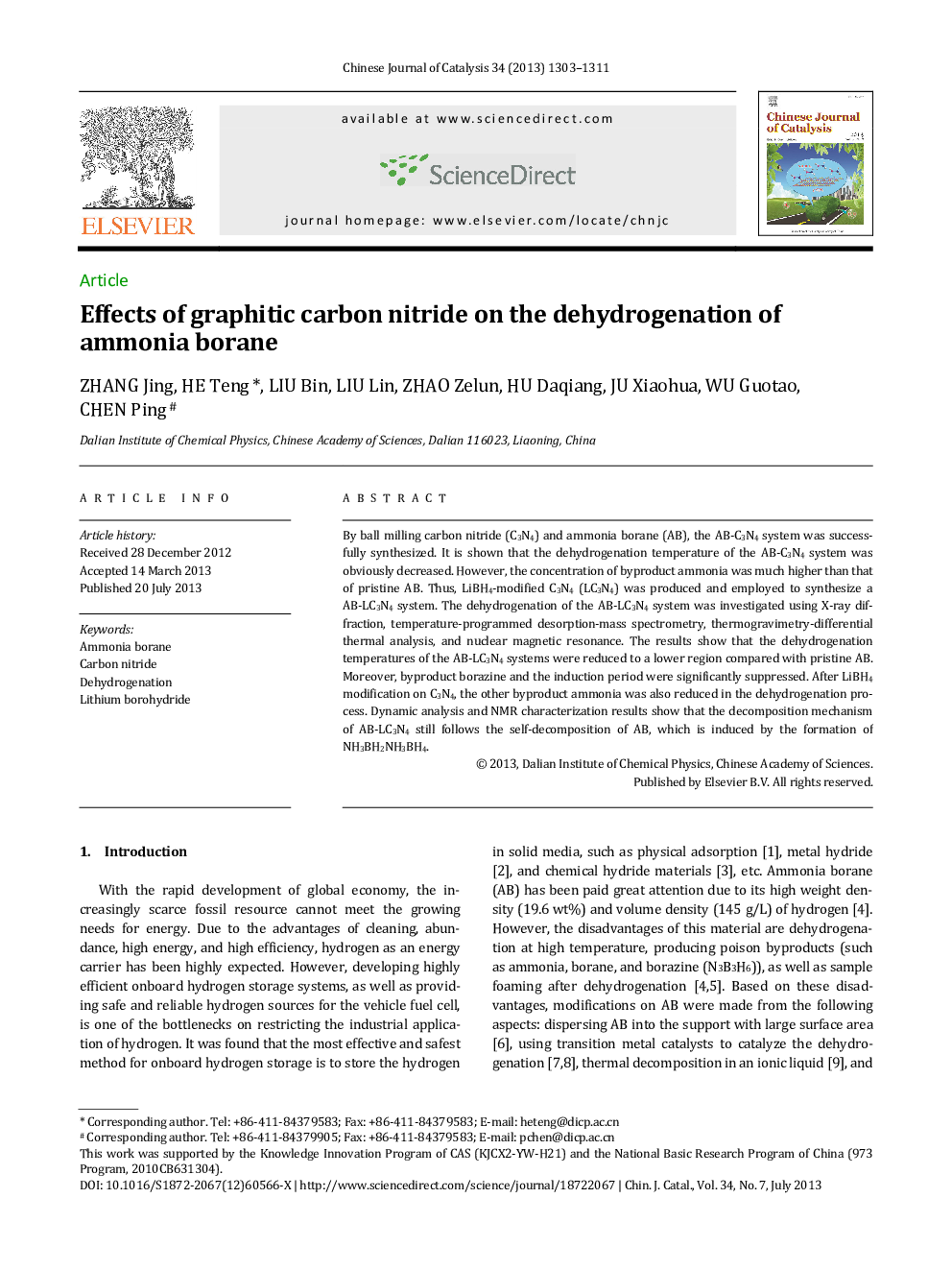| Article ID | Journal | Published Year | Pages | File Type |
|---|---|---|---|---|
| 59978 | Chinese Journal of Catalysis | 2013 | 9 Pages |
By ball milling carbon nitride (C3N4) and ammonia borane (AB), the AB-C3N4 system was successfully synthesized. It is shown that the dehydrogenation temperature of the AB-C3N4 system was obviously decreased. However, the concentration of byproduct ammonia was much higher than that of pristine AB. Thus, LiBH4-modified C3N4 (LC3N4) was produced and employed to synthesize a AB-LC3N4 system. The dehydrogenation of the AB-LC3N4 system was investigated using X-ray diffraction, temperature-programmed desorption-mass spectrometry, thermogravimetry-differential thermal analysis, and nuclear magnetic resonance. The results show that the dehydrogenation temperatures of the AB-LC3N4 systems were reduced to a lower region compared with pristine AB. Moreover, byproduct borazine and the induction period were significantly suppressed. After LiBH4 modification on C3N4, the other byproduct ammonia was also reduced in the dehydrogenation process. Dynamic analysis and NMR characterization results show that the decomposition mechanism of AB-LC3N4 still follows the self-decomposition of AB, which is induced by the formation of NH3BH2NH3BH4.
Graphical abstractThe dehydrogenation temperature of C3N4-modified ammonia borane was reduced to lower region with depression of byproduct and induction period compared with pristine ammonia borane.Figure optionsDownload full-size imageDownload as PowerPoint slide
